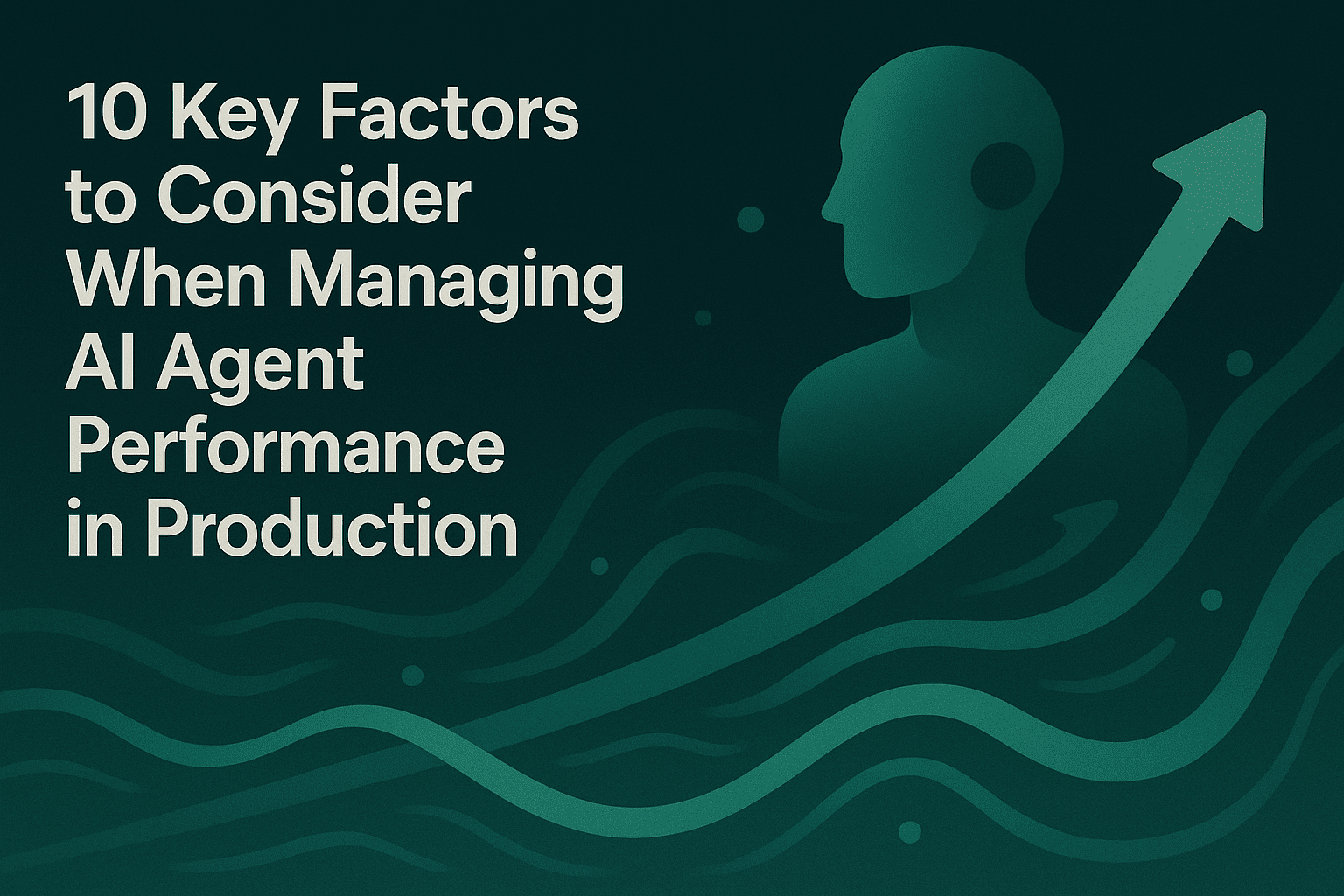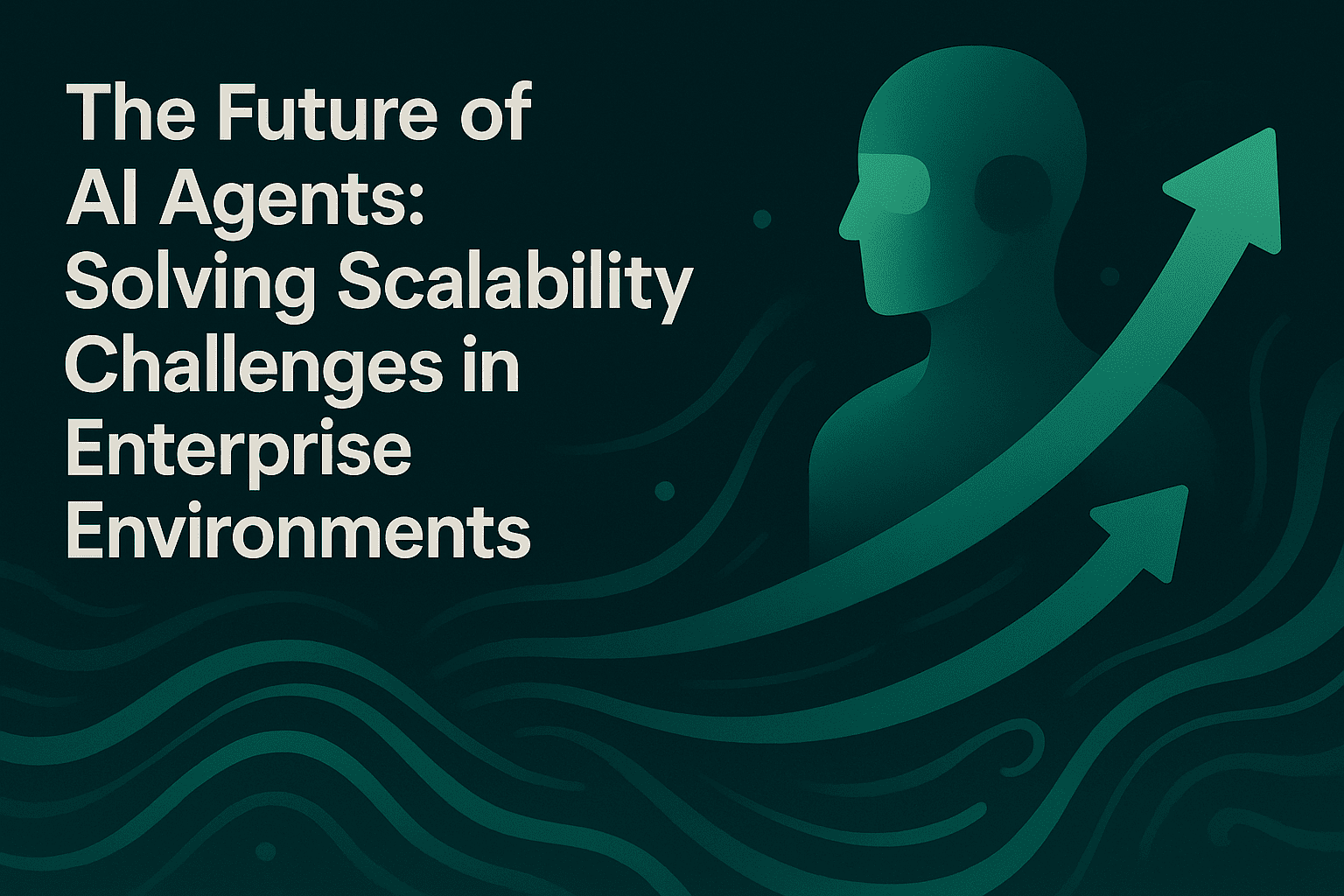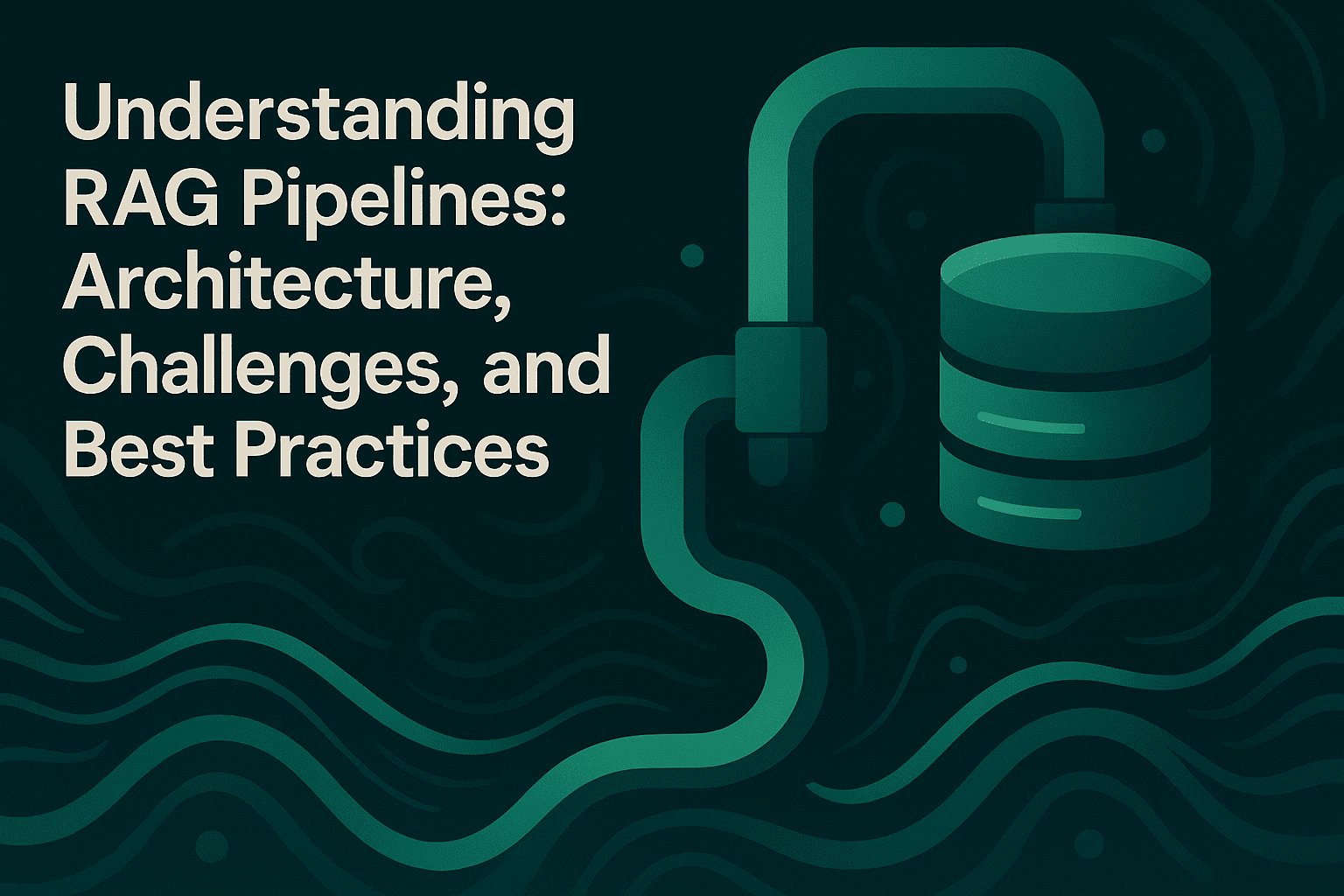A Comprehensive Guide to Preventing AI Agent Drift Over Time

TL;DR
AI agent drift degrades system performance over time through model updates, data distribution changes, and prompt variations. Research shows 91% of ML systems experience performance degradation without proactive intervention. Prevention requires continuous monitoring, automated evaluation pipelines, prompt version control, and comprehensive observability. Teams using platforms like Maxim AI achieve up to 5x faster deployment by integrating simulation, evaluation, and production monitoring into a unified workflow that detects drift before it impacts users.
Understanding AI Agent Drift and Its Impact on Production Systems
AI agent drift refers to the degradation or change in behavior of autonomous AI systems relative to their intended performance over time. Unlike traditional software that executes deterministic code, AI agents operate through large language models that make decisions autonomously, interact with external tools, and generate variable outputs even with identical inputs. This non-deterministic nature creates unique reliability challenges for production deployments.
Agent drift manifests through several mechanisms. Model updates or provider-side changes alter response distributions when vendors release new base model versions. Data shifts occur as production environments encounter new customer intents, seasonal patterns, or evolving domain terminology that differ from training conditions. Prompt variations introduce inconsistencies when multiple team members modify instruction templates without proper version control or coordination.
The business impact of undetected drift extends beyond technical metrics. When agents consistently perform as expected, they build user confidence, ensure regulatory compliance, and protect organizational reputation across customer touchpoints. Conversely, drift-induced failures can trigger costly incidents. Organizations have terminated AI deployments after discovering agents providing incorrect responses to users, with some projects resulting in multi-million dollar losses due to inadequate quality controls during production operation.
Research on machine learning systems demonstrates that 91% experience performance degradation through various drift types if not actively managed. The statistical properties of target variables change over time in unforeseen ways, causing predictions to become less accurate as temporal distance from training data increases. This phenomenon affects everything from fraud detection systems to customer support agents, making drift prevention essential for maintaining AI quality throughout the system lifecycle.
Types of AI Agent Drift: Identification and Root Causes
Understanding specific drift manifestations enables teams to implement appropriate monitoring and prevention strategies for their production systems. AI agents experience four primary drift categories that impact reliability differently.
Concept Drift
Concept drift occurs when relationships between input data and target variables change over time. The underlying patterns that models learned during training become invalid as environmental conditions evolve. Fraudsters adapt strategies to evade detection systems, requiring continuous model updates to maintain accuracy. Supply chain disruptions fundamentally alter prediction patterns, making historical training data less relevant for current decision-making contexts.
Concept drift manifests gradually or abruptly. Gradual drift accumulates through small, incremental changes in user behavior patterns over months. Abrupt drift happens suddenly when external events trigger immediate shifts in operational environments. Both patterns require different detection approaches and remediation strategies to maintain agent performance.
Data Drift
Data drift happens when input data distributions change while underlying relationships remain stable. The statistical properties of features shift due to seasonal variations, demographic changes, or evolving user preferences. An e-commerce recommendation agent trained on historical purchase data encounters drift when consumer trends shift toward new product categories not represented in training datasets.
Covariate shift represents a specific data drift type where feature distributions change but the conditional probability of outputs given inputs stays constant. Equipment degradation in data collection systems introduces measurement variations that alter feature characteristics without changing fundamental business logic. Preprocessing technique modifications during deployment create discrepancies between training and production data pipelines.
Prompt Drift
Prompt drift in agentic systems emerges from inconsistent or evolving instruction templates. Small variations in task phrasing produce dramatically different agent behaviors, particularly problematic in multi-agent systems where coordination depends on standardized communication patterns. Teams working without prompt versioning systems accumulate incremental modifications that compound over time, creating response inconsistencies.
Goal drift represents a related phenomenon where the distribution of task types changes in production. An order management agent designed for balanced query types encounters drift when production traffic skews heavily toward order modifications instead of status inquiries. The agent's accuracy for underrepresented task categories suffers as real-world usage patterns diverge from evaluation dataset assumptions.
Context Drift
Context drift affects retrieval-augmented generation systems when the characteristics of retrieved data change over time. Knowledge bases grow stale as business policies update without corresponding documentation changes. External APIs modify response formats, breaking parsing logic that agents rely on for information extraction. Vector embeddings drift when semantic representations shift due to vocabulary evolution in specialized domains.
Tool integration changes introduce context drift when external dependencies update their interfaces or functionality. An agent depending on specific API endpoints encounters failures when vendors deprecate legacy systems. Database schema modifications alter the structure of information available to agents, requiring prompt adjustments to maintain query accuracy.
Early Warning Signs: Detecting Drift Before Production Impact
Effective drift detection requires comprehensive metric tracking across multiple dimensions. Unlike traditional software monitoring that focuses on availability and latency, AI monitoring must evaluate output quality, decision accuracy, and behavioral consistency alongside system performance indicators.
Performance Degradation Signals
Teams should monitor declining success rates on established task types without corresponding code changes. Increasing error frequencies suggest environmental shifts affecting agent capabilities. Response inconsistency for similar inputs indicates model instability or prompt sensitivity issues requiring investigation.
Slow response times reveal inefficient reasoning paths where agents perform unnecessary tool invocations or retrieval operations. Token usage spikes signal verbose generation patterns that increase costs without improving output quality. These efficiency metrics provide early indicators of behavioral changes before accuracy degradation becomes visible to end users.
User Feedback Patterns
User feedback indicating off-target or irrelevant outputs serves as a critical drift detection signal. Complaint patterns clustering around specific task categories reveal systematic performance issues requiring targeted remediation. Escalation rates increasing for particular agent interactions highlight reliability gaps needing immediate attention.
Sentiment analysis on user interactions detects subtle quality deterioration before explicit complaints emerge. Agents generating technically correct but contextually inappropriate responses indicate drift in task understanding or goal alignment. These qualitative signals complement quantitative metrics for comprehensive drift monitoring.
Statistical Distribution Changes
Statistical methods calculate differences between training and production data distributions to detect drift. The Kolmogorov-Smirnov test measures maximum divergence between cumulative distribution functions, providing a nonparametric approach suitable for continuous features. Chi-square tests evaluate categorical variable distributions, identifying shifts in discrete feature spaces.
Population Stability Index calculations quantify how significantly production data deviates from training distributions. Values exceeding threshold levels trigger investigation workflows to assess whether distribution changes impact model accuracy. KL divergence measures the information loss when approximating production distributions with training distributions, providing an information-theoretic perspective on drift magnitude.
Building Robust Prevention Strategies: Proactive Drift Management
Preventing agent drift requires implementing comprehensive controls across the entire AI lifecycle from development through production operation. Effective strategies combine technical safeguards with organizational processes that maintain quality standards.
Automated Testing and Evaluation Pipelines
Automated testing frameworks validate agent behavior across diverse scenarios before deployment. Test cases capture single, specific agent behaviors like answering individual questions with expected accuracy. Scenarios simulate multi-turn conversations to ensure agents maintain context and handle follow-up interactions appropriately.
Test groups organize scenarios by business function or data source, enabling comprehensive regression testing across connected systems. Running these groups regularly monitors for drift, catches regressions before they impact users, and benchmarks performance over time. Organizations achieve confidence to innovate rapidly without sacrificing quality or reliability through systematic validation.
LLM-as-a-judge evaluation enables semantic assessment rather than brittle string matching. Advanced evaluation frameworks understand meaning, context, and intent similar to human reviewers. Instead of requiring exact phrase matches, evaluators verify that core information accuracy and intent alignment remain consistent even as natural language phrasing varies.
Prompt Version Control and Management
Prompt versioning systems track changes to instruction templates over time, creating an audit trail for behavioral modifications. Teams organize prompts with clear ownership and approval workflows preventing unauthorized modifications from introducing drift. Deployment variables enable experimentation with different prompt formulations while maintaining production stability.
Version control enables rollback capabilities when prompt modifications degrade performance. Teams compare output quality, cost, and latency across prompt versions to make data-driven deployment decisions. This systematic approach prevents ad-hoc prompt editing that accumulates technical debt and introduces unpredictable agent behaviors.
Prompt engineering workflows integrate with evaluation systems to measure quality improvements quantitatively. Teams define success criteria including task completion rates, response relevance scores, and hallucination frequencies. Automated evaluations run against large test suites to validate that prompt changes improve targeted metrics without regressing other quality dimensions.
Continuous Retraining and Model Updates
Implementing automated pipelines for regular model updates combats drift by incorporating recent data reflecting current language usage and domain patterns. Rather than relying on static models that degrade over time, continuous learning frameworks reduce feedback delay by systematically retraining models on updated datasets.
Retraining triggers activate based on performance thresholds or scheduled intervals depending on domain velocity. Financial applications requiring high accuracy may retrain weekly as market conditions evolve. Customer support agents in stable domains may follow monthly update cycles balancing freshness with operational overhead.
Data augmentation expands training datasets with diverse language examples, improving model resilience against drift. Synthetic data generation creates balanced representations across linguistic variations, reducing the risk of models reinforcing outdated stereotypes or skewed perspectives. This proactive approach addresses potential biases through balanced data representation.
Human-in-the-Loop Quality Controls
Human oversight provides critical validation for high-stakes applications where automated evaluation cannot capture all quality dimensions. Expert reviewers flag problematic AI-generated responses, fine-tuning models to align with accuracy and ethical standards. Establishing feedback loops for ongoing improvement combines human evaluations with automated drift detection.
Labeling queues manage production annotations and golden dataset creation in unified workflows. Teams curate high-quality evaluation datasets from production interactions, ensuring test suites remain representative of real-world usage patterns. This closed-loop process prevents evaluation datasets from becoming stale relative to production conditions.
Regular human evaluation cycles establish performance baselines that automated systems monitor continuously. Subject matter experts assess nuanced quality dimensions including tone appropriateness, cultural sensitivity, and domain-specific accuracy that statistical metrics cannot fully capture. These qualitative assessments complement quantitative monitoring for comprehensive quality assurance.
Implementing Comprehensive Observability for Production Systems
Production observability empowers teams to track, debug, and resolve live quality issues with minimal user impact. Comprehensive monitoring captures telemetry at multiple levels, from individual inference calls through complete multi-turn conversations to aggregate system performance.
Distributed Tracing and Session Analysis
Distributed tracing captures complete execution paths across agent workflows, providing visibility into every LLM call, tool invocation, and data access. OpenTelemetry-based instrumentation standardizes telemetry collection across frameworks, ensuring interoperability and preventing vendor lock-in.
Session-level tracing tracks entire user interactions from initial query through task completion or abandonment. Teams analyze conversation trajectories to identify points where agents deviate from optimal reasoning paths. This visibility enables root cause analysis when failures occur, accelerating debugging cycles.
Span-level instrumentation provides granular detail on individual reasoning steps, retrieval operations, and tool executions. Latency breakdowns reveal performance bottlenecks requiring optimization. Cost attribution at span level enables precise budget allocation and identifies expensive operations candidates for efficiency improvements.
Real-Time Alerting and Anomaly Detection
Real-time alert systems notify teams immediately when production metrics exceed acceptable thresholds. Error rate spikes trigger investigation workflows before widespread user impact occurs. Cost anomalies indicate unexpected resource consumption requiring immediate attention to prevent budget overruns.
Custom dashboards visualize agent behavior across dimensions relevant to specific business contexts. Teams create views cutting across user segments, task categories, and temporal patterns to surface insights not visible in generic monitoring interfaces. This flexibility supports diverse stakeholder needs from engineering teams debugging technical issues to product managers tracking business metrics.
Anomaly detection algorithms learn normal behavior patterns and flag deviations automatically. Machine learning models identify unusual activity patterns that rule-based alerts might miss. This proactive approach catches emerging drift signals before they escalate into major incidents.
Evaluation on Production Data
Running automated evaluations on production traffic provides continuous quality assessment without waiting for delayed ground truth labels. Custom evaluators implement business-specific quality criteria including policy compliance, brand voice consistency, and domain accuracy requirements.
Production evaluation results feed into data curation workflows that build progressively stronger test suites. Teams identify edge cases and failure modes from real usage, adding them to evaluation datasets to prevent regressions. This creates a virtuous cycle where production experience continuously improves development processes.
Sampling strategies balance evaluation coverage with computational costs. High-risk interactions receive comprehensive evaluation while routine queries undergo lighter assessment. This risk-based approach allocates evaluation resources efficiently while maintaining quality assurance across the production fleet.
Advanced Strategies: Governance, Security, and Compliance
Enterprise AI deployments require governance frameworks ensuring agents operate safely, ethically, and in compliance with regulatory requirements. Comprehensive controls span data management, access policies, and audit capabilities.
Data Governance and Quality Controls
Many agent failures originate from data quality issues. Organizations must audit training data for accuracy, relevance, and currency. Retrieval-augmented generation techniques ground agents on vetted corporate data, ensuring responses reflect latest policies rather than outdated information learned during pre-training.
Cross-functional collaboration between IT, legal, and business units on data labeling and annotation prevents bias from entering agent behaviors. Regular validation cycles assess both model performance and data quality, identifying staleness or contamination requiring remediation. Tools offering real-time monitoring ensure potential drift gets identified and addressed promptly.
Feedback loops between deployed agents and development environments provide insights into data distribution changes. Teams identify trends proactively, addressing potential drift before it impacts production performance. Incorporating diverse, representative data during training minimizes drift risk by improving model generalization across varying scenarios.
Budget Management and Cost Controls
Hierarchical cost control structures allocate budgets across teams, projects, and customer segments. Virtual keys enable fine-grained tracking and rate limiting at organizational levels matching business structure. Usage dashboards attribute expenses accurately, revealing cost drivers and optimization opportunities.
Token usage monitoring directly impacts operational expenses as AI providers charge by consumption. Teams optimize spending by analyzing which interactions consume disproportionate resources. Identifying expensive query patterns enables targeted optimization efforts reducing costs without sacrificing quality.
Semantic caching reduces redundant inference costs by intelligently reusing responses for semantically similar queries. Cache hit rates provide efficiency metrics demonstrating cost savings from caching strategies. This optimization becomes critical at scale where small percentage improvements translate to significant budget impacts.
Compliance and Audit Requirements
Regulatory frameworks increasingly demand transparency, fairness, and explainability in AI systems. Drift detection and prevention capabilities provide audit trails and performance documentation necessary for compliance validation with industry standards. Comprehensive logging captures prompts, retrieved documents, model versions, tool calls, safety scores, and user approvals.
EU AI Act obligations phase in through 2027, requiring risk management, data governance, human oversight, and post-market monitoring for high-risk systems. Organizations must validate compliance with specific article requirements using official regulatory guidance. NIST AI Risk Management Framework provides vendor-neutral organizing principles for control frameworks across Govern, Map, Measure, and Manage functions.
Document explainability and lineage through model factsheets, data lineage records, and change logs supporting internal reviews and regulator inquiries. These artifacts demonstrate due diligence in managing AI risks and enable rapid response to compliance questions or audit requests.
Conclusion: Building Sustainable AI Agent Systems
Preventing AI agent drift requires disciplined approaches combining continuous monitoring, automated evaluation, and proactive remediation. Organizations succeeding in production AI deployments treat quality assurance as an ongoing process rather than a one-time validation exercise.
Maxim AI provides end-to-end capabilities spanning experimentation, simulation, evaluation, and observability in a unified platform. Teams integrate pre-release testing directly with production monitoring, creating continuous improvement cycles that strengthen agent quality throughout the development lifecycle. Distributed tracing captures complete execution paths while automated evaluations measure quality dimensions at session, trace, and span levels.
The platform's flexible evaluation framework supports custom deterministic evaluators, statistical metrics, and LLM-as-a-judge approaches configurable at any granularity. Data curation workflows evolve evaluation datasets continuously from production logs, ensuring test suites remain representative as usage patterns change. This systematic approach prevents drift from eroding agent reliability over time.
Bifrost, Maxim's AI gateway, provides unified access to 12+ providers through a single OpenAI-compatible API with automatic failover, load balancing, and semantic caching. The gateway's observability integration enables cost tracking and performance monitoring across multiple model providers, supporting vendor diversification strategies that reduce dependency risks.
Building reliable AI agents requires commitment to quality across the entire lifecycle. Teams investing in comprehensive observability, systematic evaluation, and proactive drift management achieve faster deployment cycles while maintaining higher production quality standards. The practices outlined in this guide provide a foundation for sustainable AI operations that deliver consistent business value.
Ready to prevent agent drift and ship reliable AI systems? Schedule a demo to see how Maxim AI accelerates your AI development, or sign up today to start building with confidence.


